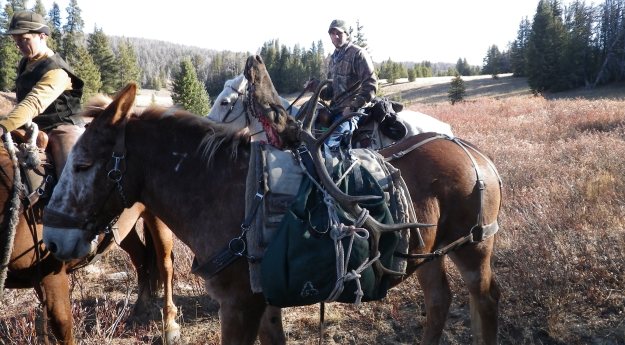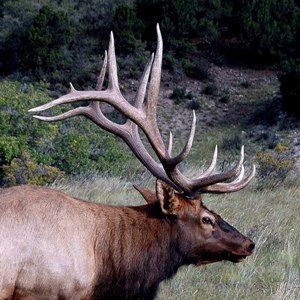
Editor’s Note: Karl Badger of Salt Lake City, Utah, is Mossy Oak’s Big Game Regional Pro Staff Manager for the western states. He primarily hunts and guides for elks, mule deer, antelope and bighorn sheep. He hunts with both a Browning 7mm and a PSE Vendetta. His favorite Mossy Oak camo pattern for western hunting is Mossy Oak Brush, but that may change depending on the season. Badger says, “In the fall, our area has a lot of native grasses and sage, and most of the leaves have fallen off the trees. So, from the waist up, you may be in brown grass that looks just like Mossy Oak Brush. If you’re hunting in the mountains, this pattern also blends in with the rocks and terrain there.”
 I judge the success of a western big-game hunt on the size of the adventure more than the size of the animal we take. For me, one of the greatest thrills in life is to go on a good Rocky Mountain elk hunt. Rocky Mountain elk are majestic animals. They live in wild, rough, steep country. To hunt them in September, hear them bugle, hear that whistling sound of a chuckle at the end of a bugle and hear that sound coming over a pine-crested canyon is an exciting feeling. It’s hard to describe, but easy to feel when you’re there. For me, these sights and sounds in the wilderness are a trophy elk hunt, regardless of the size of the antlers a hunter takes or doesn’t take. You won’t harvest a record-book elk on every hunt. If you can come back with memories and images of these wild places and sounds embedded in the memory of your mind, then you’ve had a trophy elk hunt.
I judge the success of a western big-game hunt on the size of the adventure more than the size of the animal we take. For me, one of the greatest thrills in life is to go on a good Rocky Mountain elk hunt. Rocky Mountain elk are majestic animals. They live in wild, rough, steep country. To hunt them in September, hear them bugle, hear that whistling sound of a chuckle at the end of a bugle and hear that sound coming over a pine-crested canyon is an exciting feeling. It’s hard to describe, but easy to feel when you’re there. For me, these sights and sounds in the wilderness are a trophy elk hunt, regardless of the size of the antlers a hunter takes or doesn’t take. You won’t harvest a record-book elk on every hunt. If you can come back with memories and images of these wild places and sounds embedded in the memory of your mind, then you’ve had a trophy elk hunt.
The best bull I’ve ever taken scored just over 325 on Boone and Crockett. We named this bull “The Thunder Mountain Bull,” since he was taken on Thunder Mountain in Wyoming. We had ridden horses all day. Finally, we spotted this bull in a herd with satellite bulls, a few other large bulls and some cows, all sunning themselves in an opening on the side of a mountain. We took the horses as far as we could, tied them off and stalked for about 2-1/2-hours to get within range. During the entire stalk, we tried to keep the herd in sight. When I finally got within 200 yards of the bull, I took the shot. Slipping, hiding behind trees and crawling over rocks trying to get into position is embedded in my memory at least as much as actually taking the shot and putting my hands on the elk’s rack.
I took that elk with my Browning 7mm with a 164-grain bullet. I like this rifle because it’s flat-shooting and has the knock-down power to put an elk down efficiently. I can’t remember exactly which riflescope I was using, but I like both Nikon and Leupold. I also like the Nikon Monarch binoculars. Good binoculars are the tool you’ll use the most when elk hunting.
Click the links to see Karl Badger talk about Camouflage for Hunting in the West and Bow and Rifle Set-up Out West.




























